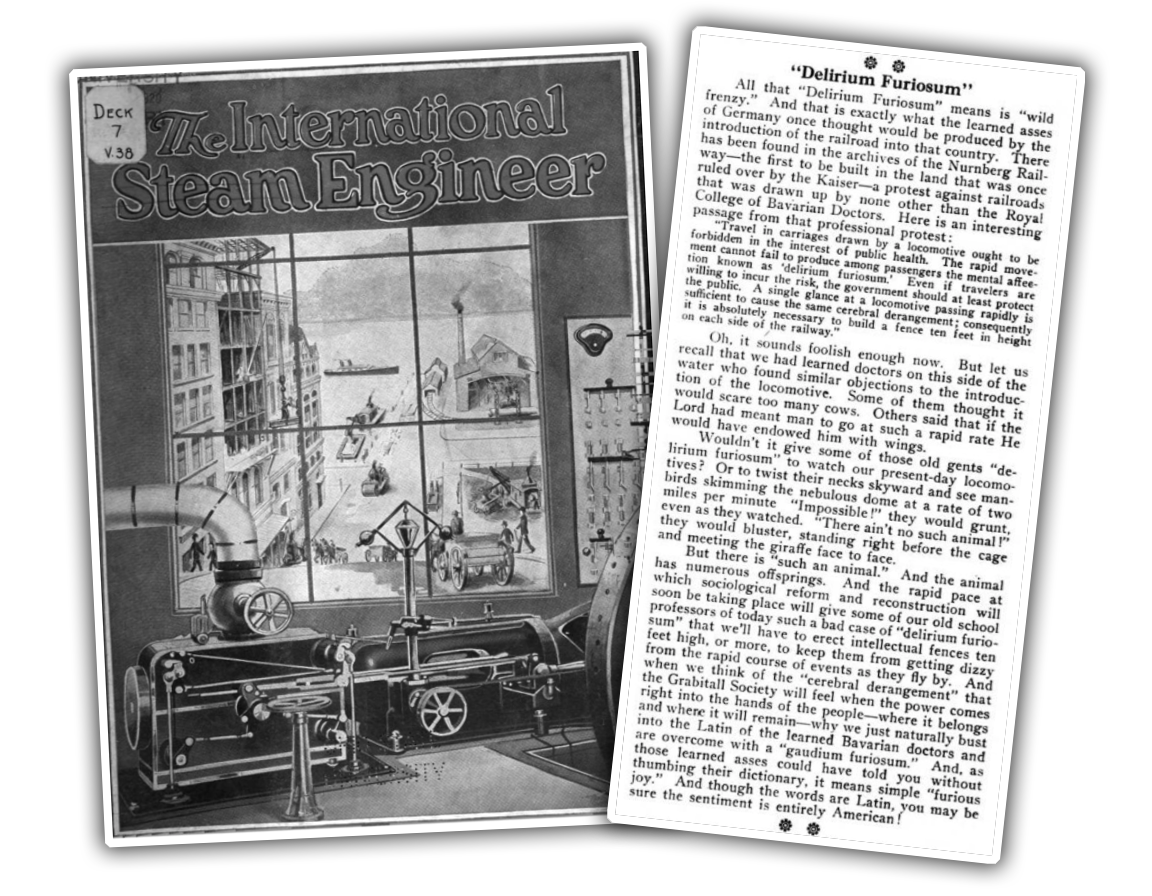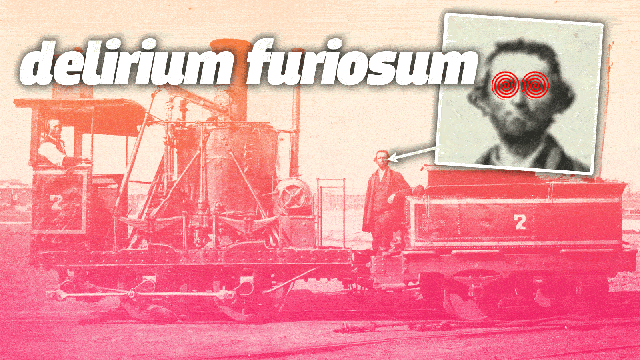I suspect that everyone reading this at one time or another has felt some kind of speed-related intoxication; a sort of mildly altered state of excitement and engagement because, for reasons that seem to go against everything you’d think evolution would have taught us, going fast is fun. But long before people actually were going at any speeds even close to what we’d consider fast, there were people freaking out about the very idea of it all. The freaking out was even given legitimacy through academia, and, even better, an actual, scientific-sounding name.
The name was “delirium furiosum.”
While that sounds like something some pale British kid at Hogwarts would yell in your direction while flailing around with a wand, hoping to put you into some kind of state of confused rage and then you turn into a giant vomiting daffodil, the name literally means something like “wild frenzy,” which is all but meaningless as a name of a particular condition.
The name came from an 1835-ish study by the Königlich Bayrisches Obermedizinalkollegium — the Royal Bavarian Medical College, basically. That study included this rather infamous paragraph:
“Locomotion with the help of any kind of steam engines should, in the interest of public health, be prohibited. The rapid movements cannot fail to produce in the passengers mental unrest, i.e. ‘delirium furiosum’. Even conceded that travellers voluntarily undergo this danger, the state must at least protect the onlookers, since the view of a locomotive, which races along in full speed, suffices to elicit this terrible sickness. It is therefore paramount that on both sides of the rails a fence is raised of at least six feet height.”
It’s worth keeping in mind that the “rapid movements” they were talking about in this era would have been somewhere around 32 to 40 km/h. These were the speeds of madness.
It’s interesting that the report seems to accept that people will still choose to mount these iron horses of madness, and so they suggest a solution: constructing a fence, “at least 1.5 metres height,” along both sides of the rail lines.
The wording — at least translated from German — is a bit confusing regarding what this fence is supposed to do. Is it to protect “onlookers,” which sounds like what you’d call the people not on the train, but seeing it, from the terrifying displays of the delerious furiousers?
Or is it designed to prevent the onset of the big DF by blocking the view out the windows of the locomotive, which seems to be implied to be the cause of the condition? And, if that’s the case, wouldn’t it be cheaper and easier to just build rail cars without windows?
Of course, people didn’t really seem to go mad when they went faster than 48 km/h or so, at least not noticeably so. This was realised fairly early on, and soon the Bavarian study was the subject of ridicule, as you can see in this July 1920 edition of The Industrial Steam Engineer:

What’s interesting about this particular take on delirium furiosum is that while it mocks the old, likely dead eggheads that first thought of the idea and marvels about what they must think of modern trains and aircraft (I assume that’s what they mean by “man-birds?” I hope?) they also suggest that for a certain class of old-school intellectuals, they may suffer from delirium furiosum themselves, but not from speed of travel, but from “the rapid pace at which sociological reform and reconstruction.”
This is an interesting take, interestingly upbeat and with some hints of utopian socialism:
“And when we think of the “cerebral derangement” that the Grabitall Society will feel when the power comes right into the hands of the people — where it belongs and where it will remain — we…are overcome with a “gaudium furiosum.” And, as those learned asses could have told you…it means simple “furious joy.”
All this is sort of unexpected, like the use of the phrase “Grabitall Society,” and certainly provides a more upbeat version of what this sort of idea of rapid societal change would morph into by the 1970s, the overwhelmed dystopian outlook as seen in things like Alvin Tofler’s Future Shock, which you can watch in its entirety here if you need an unsettling chuckle:
I don’t know. Maybe we all have, collectively, gone insane because we’ve driven in more than second gear. It sure would explain a lot.
